By Brian Mitchell
The first train to reach Springfield arrived on Sept. 9, 1852, through Alton. The next year, the city was connected to Normal, and soon multiple railroad companies were moving freight and passengers through Springfield. There was so much capacity that when the Great Chicago Fire destroyed much of the state’s largest city, railroad executives found a new use for the trains: disaster tourism.
In 1871, S. H. Melvin and his two Springfield railroads could count among their accomplishments four brick stores, a new freight depot, a passenger depot, a hotel, a tank-house, and two new engines, bringing their total number of engines on the line to six. Commenting on the progress, the Daily Illinois state Register wrote that the railroad was “rapidly improving.”
Fire decimated Chicago on Oct. 8 of that year. It killed roughly 300 people, destroyed over 17,000 structures, and left more than 100,000 people without homes. It was almost unimaginable in scope.
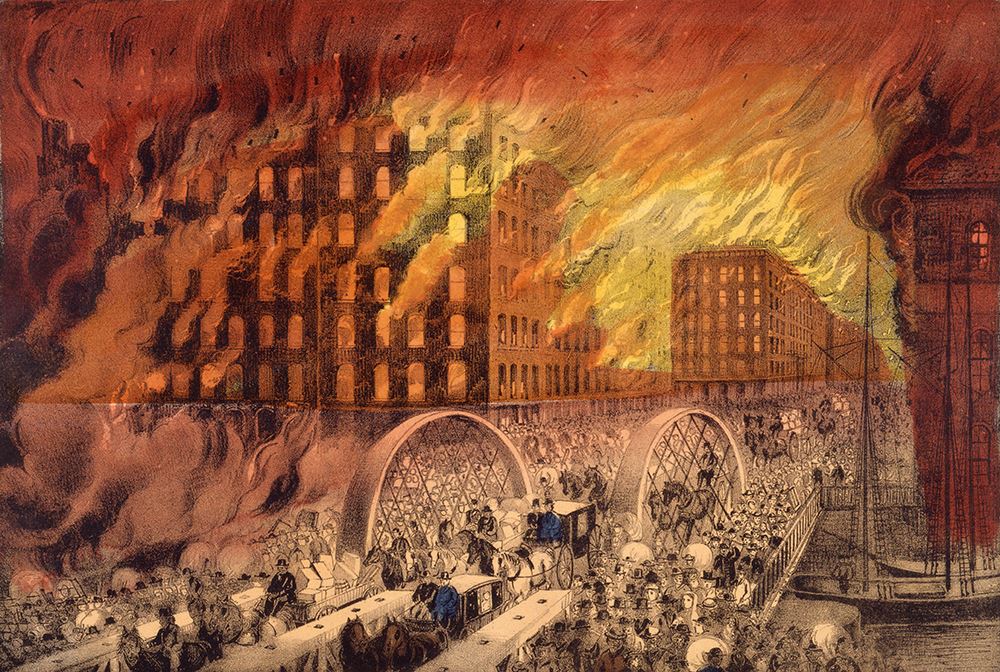 A Currier & Ives print of people fleeing the Chicago fire. (Courtesy of Wikipedia)
A Currier & Ives print of people fleeing the Chicago fire. (Courtesy of Wikipedia)
But there was no need to simply imagine it, if you had money. On October 19, 1871, the railroad offered a new route, an excursion to the catastrophe. Potential patrons were challenged “not to lose their chance of seeing the results of the greatest fire on record.” With seemingly no sympathy for the Great Fire’s victims, the company promoted single-day jaunts to Chicago at a cost of $7.50.
The train left from the Madison Street depot on October 21 at 11:30 p.m. and deposited the curious and thrill-seeking passengers – called “excursionists” by journalists – at 7 a.m. at Michigan Avenue and Lake Street, the heart of what the paper identified as the “Burnt District.” The train departed from Chicago at 7 that night and arrived back at Springfield’s Union depot at 2:30 a.m. Excursionists were advised “to carry their own supplies of provisions, as they will find but limited accommodations in Chicago.” Excursionists were assured the train would remain at the depot, for their convenience, and an officer would be onboard to take charge of the coats, baggage, and picnic baskets as they explored the damage.
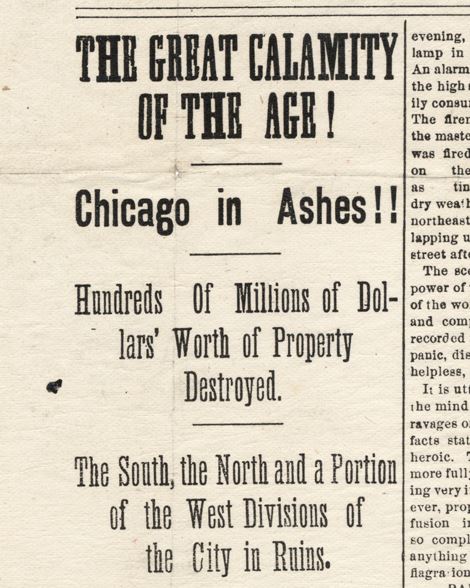 Headlines from the Chicago Journal of Oct. 9, 1871 (ALPLM collection)
Headlines from the Chicago Journal of Oct. 9, 1871 (ALPLM collection)
Although no record could be located which provided the number of passengers on the first “Great Fire” excursion, the trip was likely profitable enough to induce a second, more luxurious, trip in the following days. This second trip included more riders, this time attracting wealthy patrons from Clinton, DeWitt, Farmer City, Gibson, Gillman, and St. Louis. The Register maintained that the train was “half full when it left Springfield” and each city the train passed “contributed its share of excursionists.” At Gillman, the party doubled in size as they were joined by a contingent of passengers from St. Louis who linked five coaches to the Springfield train before it continued to Chicago. Writing on the trip northward to Chicago, The Register noted “Without an accident to mar the pleasure or without incident worthy of record in ‘our notebook,’ the party reached the city of the lakes on time, in the best possible condition, and in good spirits and full of fun.”
In Chicago, the excursionists quickly disembarked from their railcars and scattered in every direction “in search of adventures and whatever might turn up.” The trainload of excursionists from Springfield were not alone. The Register noted “excursionists from all parts of the country filled the streets and blockaded the ways in all directions. Every available vehicle in the city, from the cumbersome hacks, fashionable a score of years ago, to the light pleasure carriage of the period, was brought into the requisition for the accommodation and pleasure of those strangers who desired ‘to do the Burnt District.’”
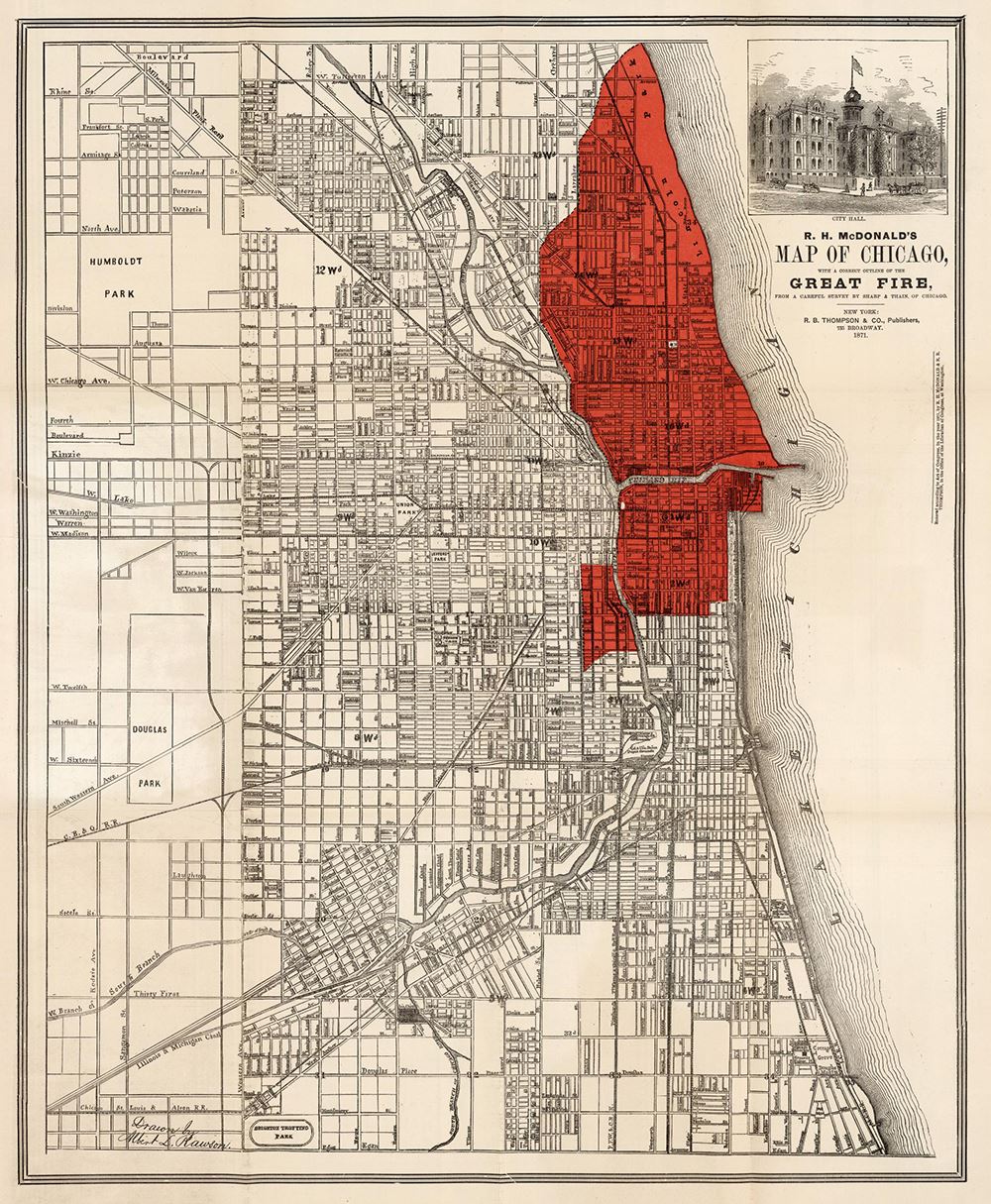 An 1872 map showing the Chicago area and the parts of the city ravaged by fire. (Courtesy of David Rumsey Map Collection)
An 1872 map showing the Chicago area and the parts of the city ravaged by fire. (Courtesy of David Rumsey Map Collection)
The excursionists, in great concentrations, tended to travel to the northern end of the city to explore. They came to the northern neighborhoods in numbers large enough to create a jam of persons in the streets and on the sidewalks. This so-called “perfect jam” was filled with “men, women, and children, all delving and diving into the ruins for relics of the wonderful and never-to-be-forgotten fire.”
While the excursionists explored the areas that suffered the most damage by the fires, Chicago residents fled to neighborhoods in the west and south of the city. Those neighborhoods and their resources were strained to support the migration. Describing the chaos of the city, the Register wrote, “The streets are literally full of the restless, surging humanity, and are almost impassable at any hour of the day.” In the wake of the fire, businesses were converted into makeshift apartments and boarding houses. Amidst the mayhem, shortages reduced Chicagoans to bartering and trading to meet their day-to-day needs.
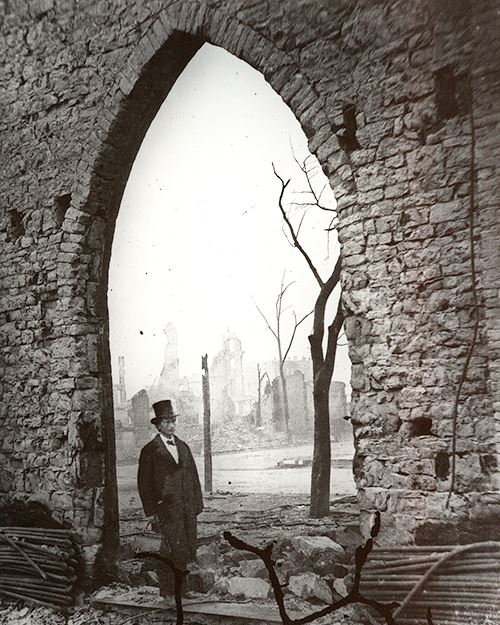
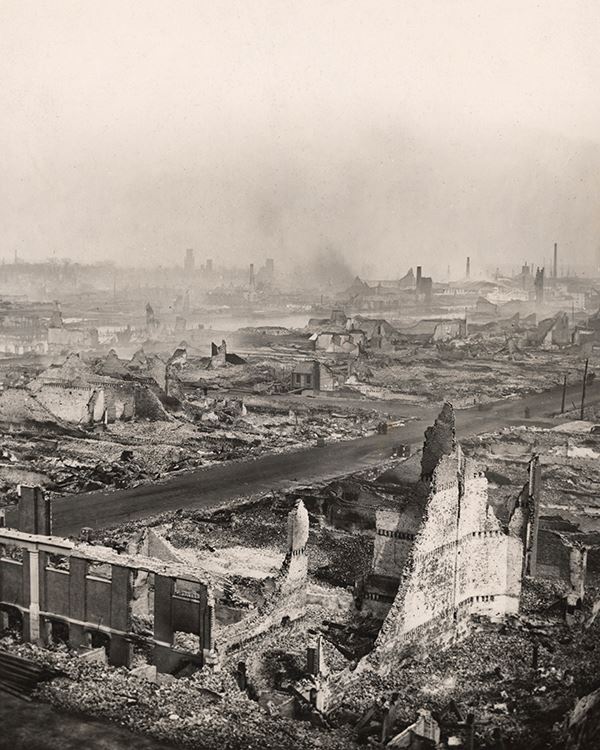 Scenes of devastation from the Great Chicago Fire. (ALPLM collection)
Scenes of devastation from the Great Chicago Fire. (ALPLM collection)
The excursionists did not suffer alongside their hosts. While Chicagoans scavenged, bartered, or traded for their food, the excursionists, who were instructed to abandon the picnic lunches that were required on the first trip, took along Pullman dining cars for the second excursion. In sharp contrast to their subjects of curiosity, wealthy excursionists took breaks from their treks, returning to the dining cars for sustenance and refreshments before rejoining their parties to continue their explorations of the city’s ruins and blight.
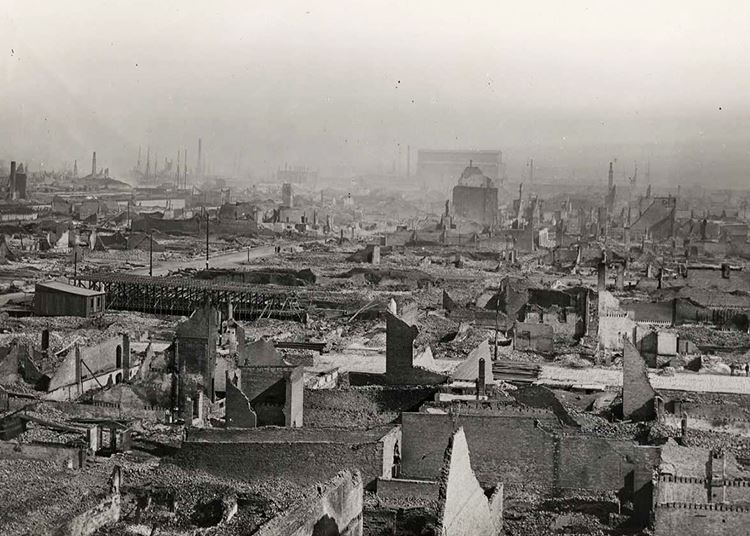
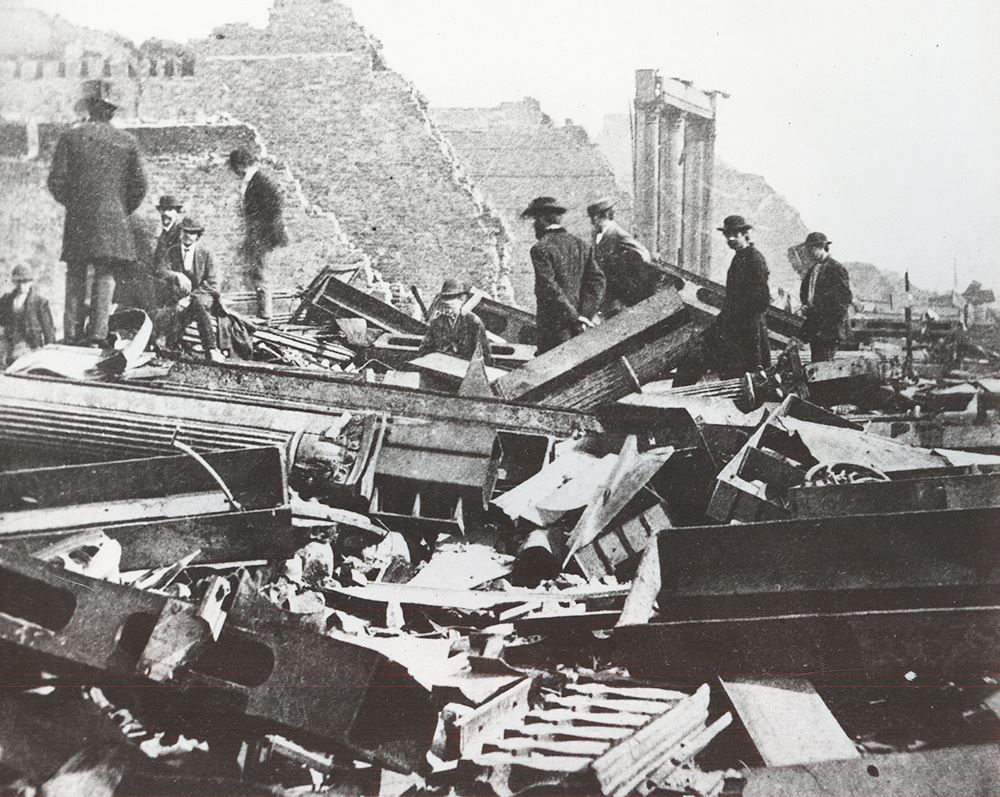 More of the Chicago fire’s destruction. (ALPLM collection)
More of the Chicago fire’s destruction. (ALPLM collection)
For the excursionists, the trek was a short trip during which they “spent the day looking at ruins, searching for curiosities, attending church, and at the hour appointed for its [the party of excursionists] return, assembled at the depot and at once embarked for home.” The Register in describing the trip back to Springfield noted, “After a pleasant run of seven hours and a half, the city was reached at half past two o’clock this morning, and the excursionists dispersed to their respective homes, much pleased with their adventures, themselves, and their trip over the new route of the Gilman and Springfield Railroad.”
Dr. Mitchell is the ALPLM’s director of research and interpretation.